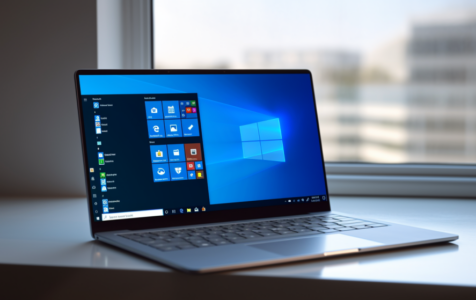Encountering boot issues, such as a black screen, on your Windows 10 PC can be distressing. Often, this results from a damaged master boot record (MBR). This guide provides steps to repair the MBR and addresses other boot issues.
Windows 10 Boot Process
- BIOS or UEFI Firmware initiates.
- Power On Self Test (POST) checks hardware components.
- The master boot record loads WINLOAD.EXE into the main memory.
- NTOSKRNL.EXE (NT Kernel) and HAL (Hardware Abstraction Layer) initiate the startup.
- Windows initializes hardware and reads the Windows Registry and user profile.
Step-by-Step Troubleshooting
1. Using the Built-in Recovery Environment:
- Power cycle your PC three times by turning it off as soon as the Windows logo appears during booting.
- After the third restart, the PC enters diagnostics mode.
- Select Advanced options > Troubleshoot > Startup Repair.
2. Using Windows 10 Installation Media:
- Create a Windows 10 USB Bootable Flash Drive from another PC.
- Ensure BIOS is set to boot from USB.
- Boot using the USB and select Repair Computer > Troubleshoot > Advanced Options > Command Prompt.
3. Command Prompt Boot Repairs:
Expert Tip: For smoother PC performance, consider using a PC optimization tool. It handles junk files, incorrect settings, and harmful apps. Make sure it's right for your system, and always check the EULA and Privacy Policy.
Special offer. About Outbyte, uninstall instructions, EULA, Privacy Policy.
- Type
BOOTREC /FIXMBRand press Enter. - Type
BOOTREC /FIXBOOTand press Enter. - For missing Boot Manager, type
BOOTREC /RebuildBcd. - For dual boot configurations with older Windows versions, use
BOOTREC /ScanOs.
4. Using Startup Repair:
- Interrupt the boot process three times to access Advanced Startup.
- Or, if unable, use a USB installation media to access Advanced Settings.
- Navigate and use the Startup Repair feature.
5. Advanced Solutions:
- Boot into Safe Mode and run System File Checker (SFC) and DISM scans.
- Check recently installed anti-malware programs, as some cause startup issues.
- Address potential Boot Configuration Data and Master Boot Record issues using the Command Prompt.
- If issues persist, consider a system reset or a clean installation of Windows 10.
Wrap-Up
Addressing boot issues requires systematic troubleshooting. With the methods above, from command prompt solutions to software tools, you’re well-equipped. Ensure regular backups and updates to avoid complications.
